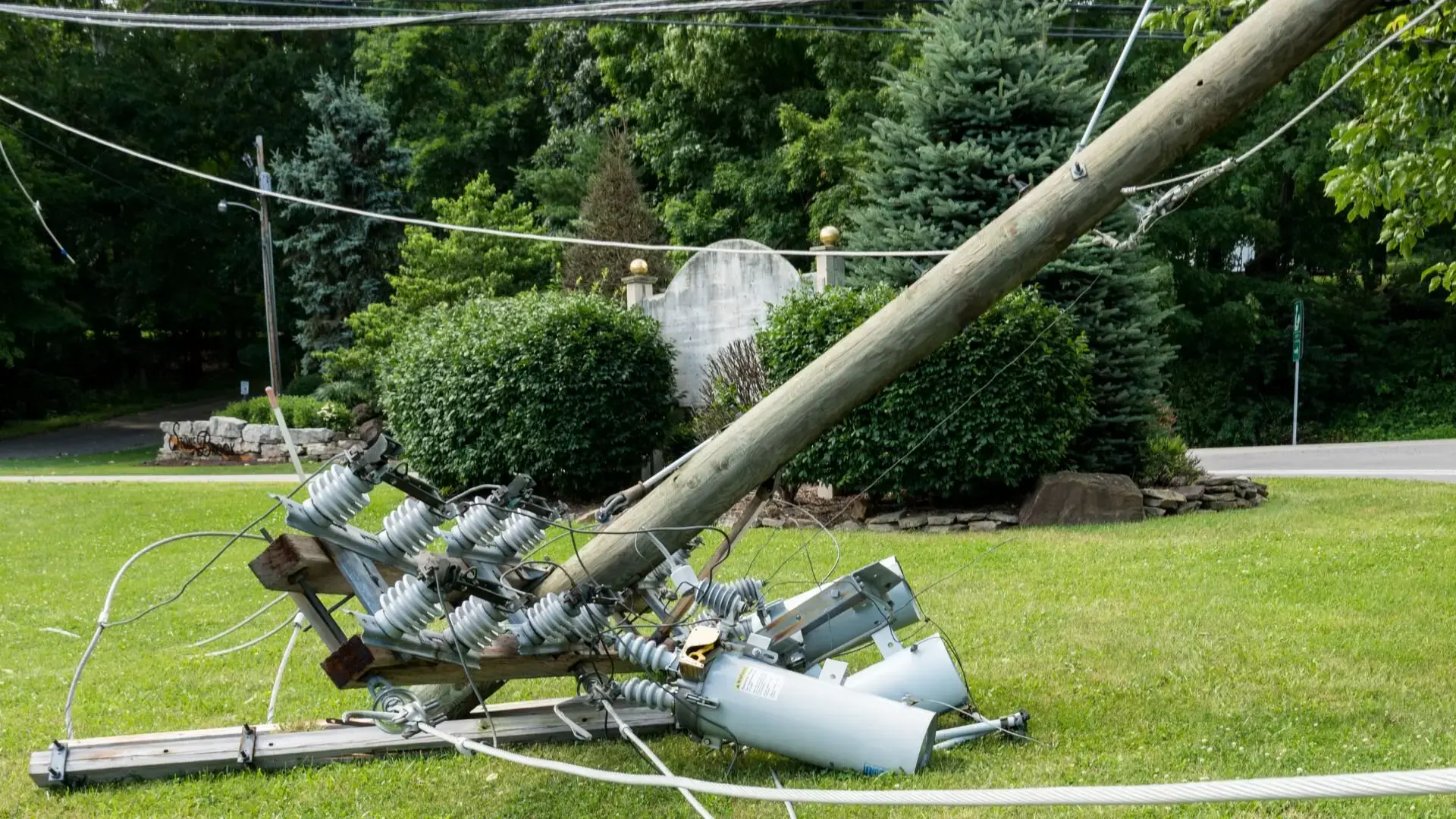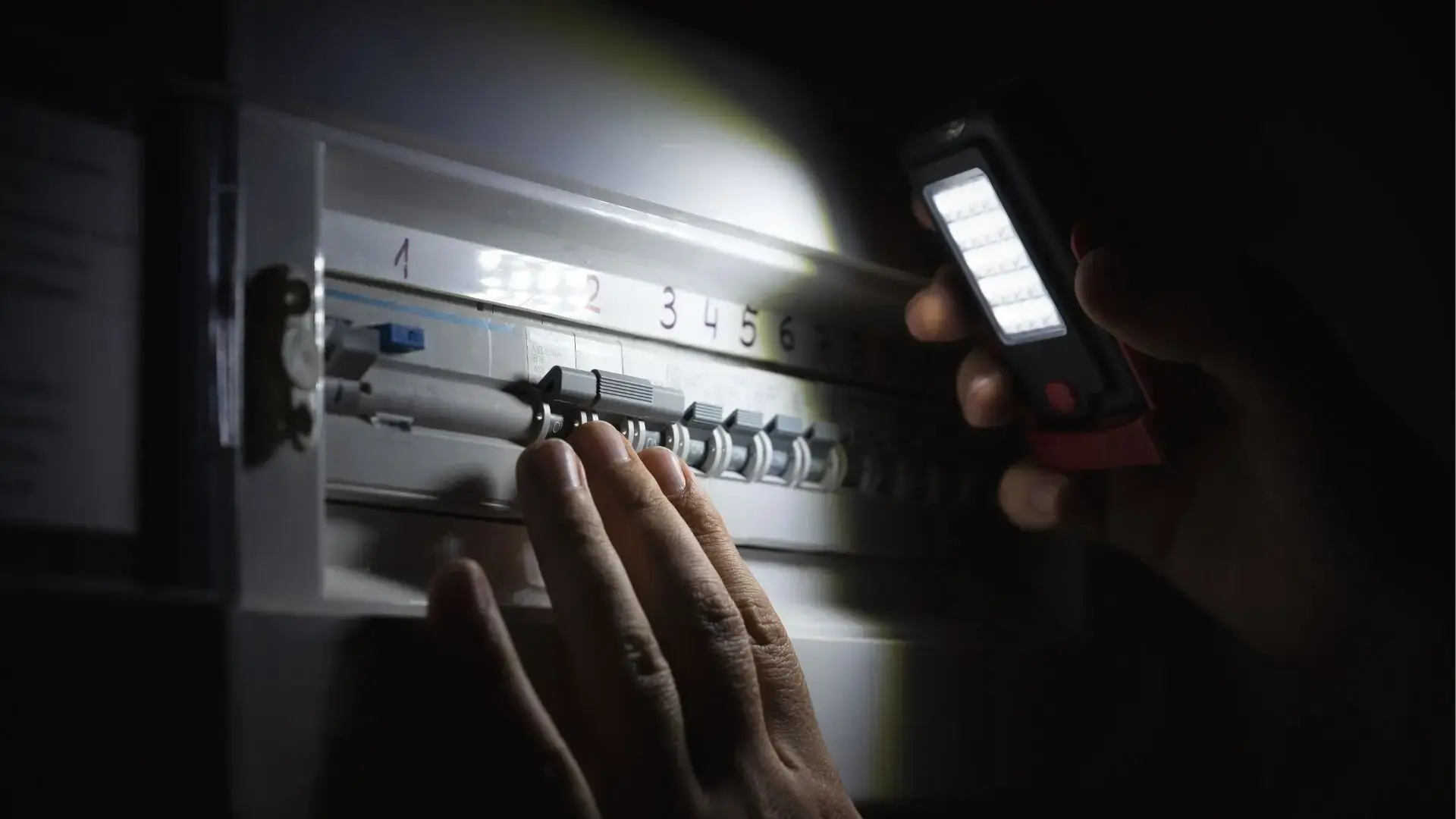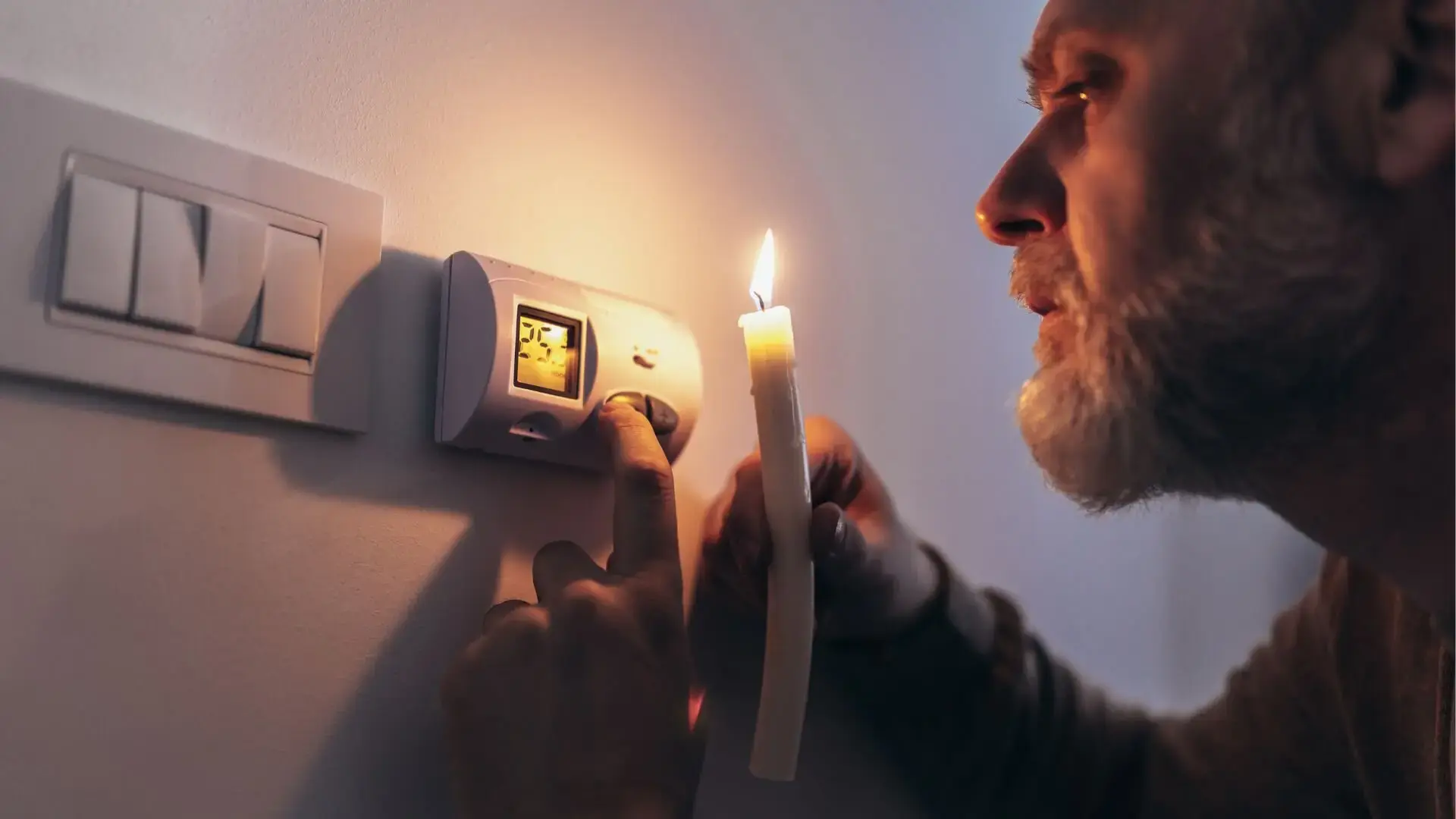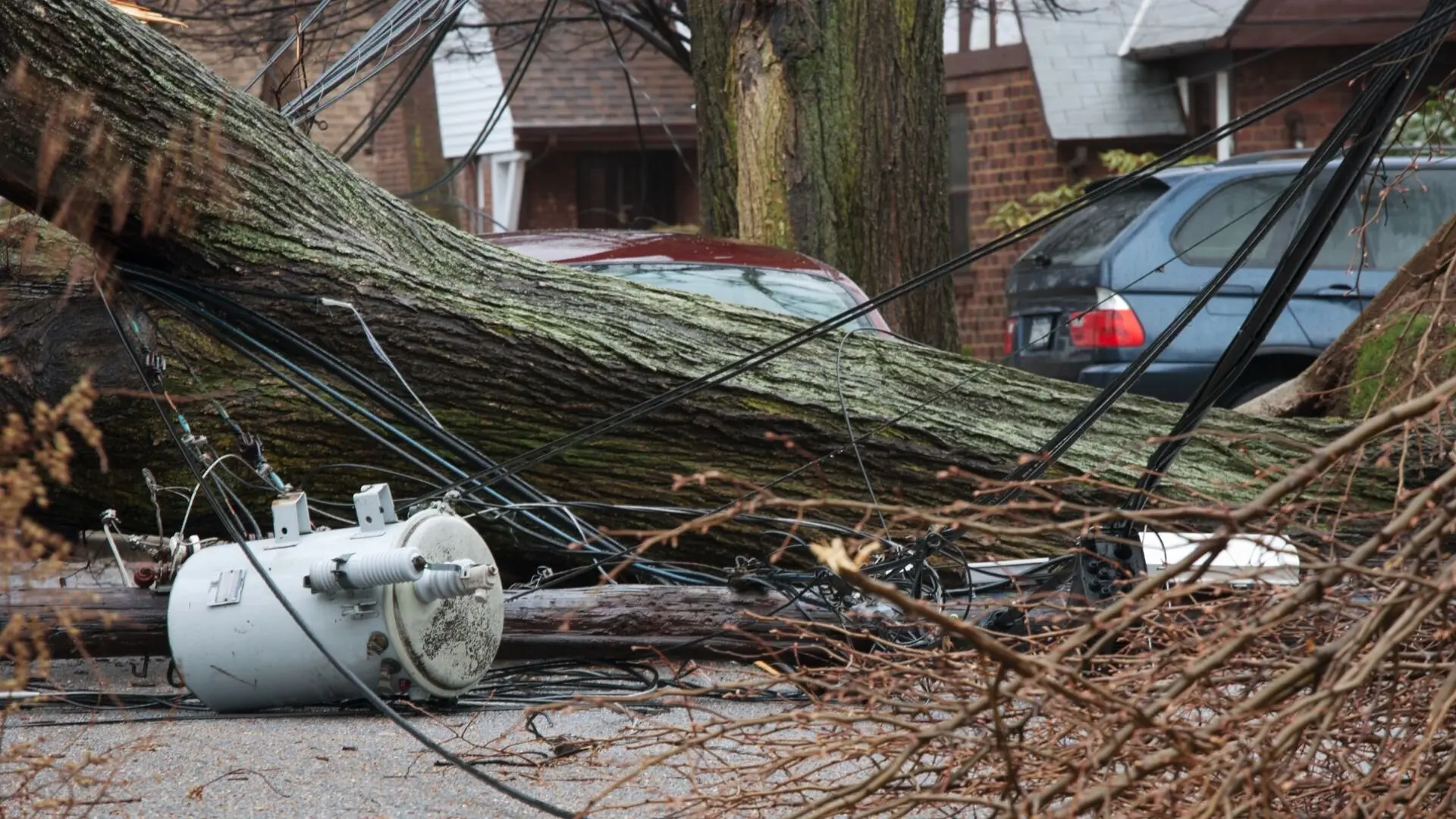
Get your free Melbourne Electrician quote today!
Our team of Melbourne Electricians is here to help you with any questions or concerns you may have. We’re committed to providing you with the best possible service and support.
Power outages can occur for a variety of reasons. Severe weather, animals, vegetation, equipment failure, and human error are the most prevalent causes of electrical blackouts. Understanding what triggers outages can help you prepare and respond appropriately.
Power outages can really throw a spanner in the works, popping up when you least expect them. By getting a handle on what causes these blackouts, you can be better prepared and respond swiftly when your power takes a hit .
Several factors can trigger sudden loss of power and larger blackouts. The most common reasons for electric power outages and blackouts relate to weather events, animals or vegetation interfering with power infrastructure and electrical equipment, failures of the power grid system and other electrical equipment, and human errors.
In this piece, we’ll explore the main causes of power outages , shedding light on why your electricity might suddenly cut out. By looking into storms, high winds, lightning, equipment failings, and even human gaffes like overloaded power boards, you’ll be better prepared to craft solid emergency plans.
Being aware of the main origins of blackouts also helps prevent power loss and restore electricity more quickly. Major causes to be covered include severe weather events, animal and vegetation interference, widespread failures of the electrical grid system, and errors by utility staff or electricity consumers.
Severe Weather Events

Storms, Lightning and Wind
Severe weather is a top culprit for power outages, often wreaking havoc on electrical infrastructure. Fierce storms, complete with lightning, high winds, rain, and flooding, frequently bring down power lines and poles, leading to blackouts.
Lightning is one of the most prevalent weather-related reasons for power loss. When lightning strikes transmission lines or other electrical equipment like transformers and generators, it can cause immediate power outages and equipment failure .
High-voltage electricity also often travels into power stations and power boards, triggering short circuits, voltage sags, and permanent faults. Lightning strikes severely damage power lines and critical system components.
During thunderstorms and tropical cyclones, high winds often topple power lines and utility poles, leading to outages. Additionally, wind-blown debris can cause further damage to power lines. The time needed to restore electricity can vary widely, from just a few hours to several weeks, depending on the extent and severity of the damage.
Flooding and Rain
Heavy rain and flooding from storms can really put underground wires through the wringer, overwhelming the system. When rain persists and floodwaters rise, they seep into electrical gear, causing shorts and failures. Flooded areas also slow down utility crews from safely reaching and fixing the damage quickly.
Heatwaves
Heat waves cause spikes in energy demand as people crank up air conditioning to stay cool. When demand surges beyond available supply, planned power outages and rolling blackouts are utilised to avoid complete grid failure. Extreme heat, therefore, strains the electrical system and indirectly causes blackouts.
Animal and Vegetation Interference
Various animals, such as squirrels, birds, snakes, and raccoons, frequently interfere with electrical power equipment, causing unexpected power outages. Squirrels chew through wires and cables, while birds build nests near transformers and circuit breakers, damaging equipment and disrupting the electrical power supply. Statistics show that animal-related power interruptions account for 10-20% of all power outages .
High winds blow branches and vegetation onto power lines during storms, knocking them down. Overgrown trees and plants coming into contact with lines and poles also trigger power outages. Fast-growing trees that are not properly trimmed back from infrastructure drag lines down over time. Preventative vegetation maintenance is critical to avoid these issues.
Utility companies need to protect equipment from animal damage and vegetation overgrowth. Physical covers and guards on wires, transformers and generators block wildlife access. In areas prone to bushfires in Australia, power companies may proactively shut off electricity to prevent fire risk, resulting in planned outages.
Routine tree trimming and pruning around lines clear hazardous branches. Proactive inspections and repairs help detect and fix minor problems before larger failures occur. With diligent prevention, animal and plant-related power loss can be reduced.
Equipment Failure
Ageing, electrical infrastructure wear and tear, and overload conditions can lead to equipment failure and power loss. The power grid and its components, like generators and transformers, have finite lifespans. As parts corrode and degrade over time, the risk of failure increases. Outdated technology that has not been upgraded or replaced is especially prone to malfunctioning.
When demand exceeds the rated capacities of generators, transformers, and transmission lines, it stresses the equipment and causes breakdowns. Grid overload also leads to cascading failures as one broken component puts more strain on neighbouring equipment. Protective electronic devices like fuses and circuit breakers are meant to stop this, but age and poor maintenance reduce their effectiveness.

Transmission bottlenecks where many lines converge in one area are vulnerable points of failure. If one component in a bottleneck fails, it can create a ripple effect of shutdowns. Building redundancy into the grid provides a backup if an element fails in a critical junction.
Physical attacks, cyberattacks, and terrorism targeting electricity infrastructure damage systems and contribute to blackouts. Attackers with malicious intent can trigger deliberate equipment destruction and sabotage. Utility companies need strong defensive measures to guard against these threats, which aim to disrupt the power supply.
While some failures from age and natural causes are unavoidable, preventative maintenance and upgrades to modernise infrastructure reduce risks. Replacing outdated transformers, generators, and lines makes the grid more resilient . Proactive repairs and capacity expansions are crucial to preventing failure-related power outages .
Preparing and Responding to Outages
Being prepared for power outages helps you safely cope when blackouts occur. Have an emergency outage kit with essentials like flashlights, spare batteries, first aid supplies, and non-perishable foods in case the electricity supply gets disrupted.
Before storms approach, unplug major appliances to [avoid surges when power is restored](https://wpelectricians.com.au/blog/do-surge-protector-prevent-electrocution) .
Learn how to operate a generator for temporary power generation properly, but do so cautiously to avoid carbon monoxide risks.
Monitor alerts and notifications from your electricity provider and utility company to stay updated on outage timelines, causes and restoration progress. Be patient as crews work diligently to restore the electricity network once failure factors are addressed safely.
Avoid going near a downed power line and wait for proper linemen’s clearance.
With the proper preparations, you can stay safe and comfortable when unavoidable power interruptions happen.

Let Knowledge Power Your Electrical Resilience
Severe weather events, animal interference, equipment failure, and human errors are the leading causes of power outages and supply disruptions. Awareness of these ordinary blackout triggers emphasises the importance of emergency preparedness when unavoidable electricity interruptions hit.
Understanding why outages occur also helps you take preventative measures to minimise risks, like properly maintaining vegetation around power lines. Knowledge of the causes of outages enables consumers to make informed decisions, be proactive, and build resilience against the factors leading to blackouts.
Here in Melbourne at WP Electrical, our skilled team is ready to help prevent outages , set up backup power systems, and ensure your safety in emergencies. Reach out to us to keep your power reliable and explore the solutions you need .
Frequently Asked Questions

What are some preventative measures I can take against power outages?
To keep outages at bay, consider trimming back overgrown trees around lines, fitting surge protectors, updating outdated wiring and appliances, and getting a qualified electrician to check your systems each year. These steps can ward off weather damage, power surges, and other issues.
Keeping trees pruned prevents branches from falling during storms. Surge protectors guard against voltage spikes and lightning strikes. Proper maintenance and modernisation reduce overall risk.
If an outage occurs, how long does it usually take to get power restored?
The time it takes to restore power can greatly differ, hinging on the blackout’s size and cause. Localised outages, often due to fallen branches or animals tampering with equipment, might only take a few hours to fix as crews swiftly address the issues.
Severe weather events that affect transmission lines and critical infrastructure can take days or weeks to fully restore electricity supply. Check with your utility provider for estimated timelines based on the factors causing your power loss.
What should I do during a prolonged outage?
Avoid opening refrigerators to maintain cold air as long as possible. Use perishable foods first, then rely on non-perishables and canned goods. Run backup generators cautiously; only power essentials are used to conserve fuel.
Turn off electrical devices to avoid damage from surges when power is automatically restored. Check on elderly neighbours who may need assistance. Stay tuned for utility company updates on restoration progress. Remain patient as crews work to safely return power during emergencies.
Published by: Pascal Harb17 October 2025